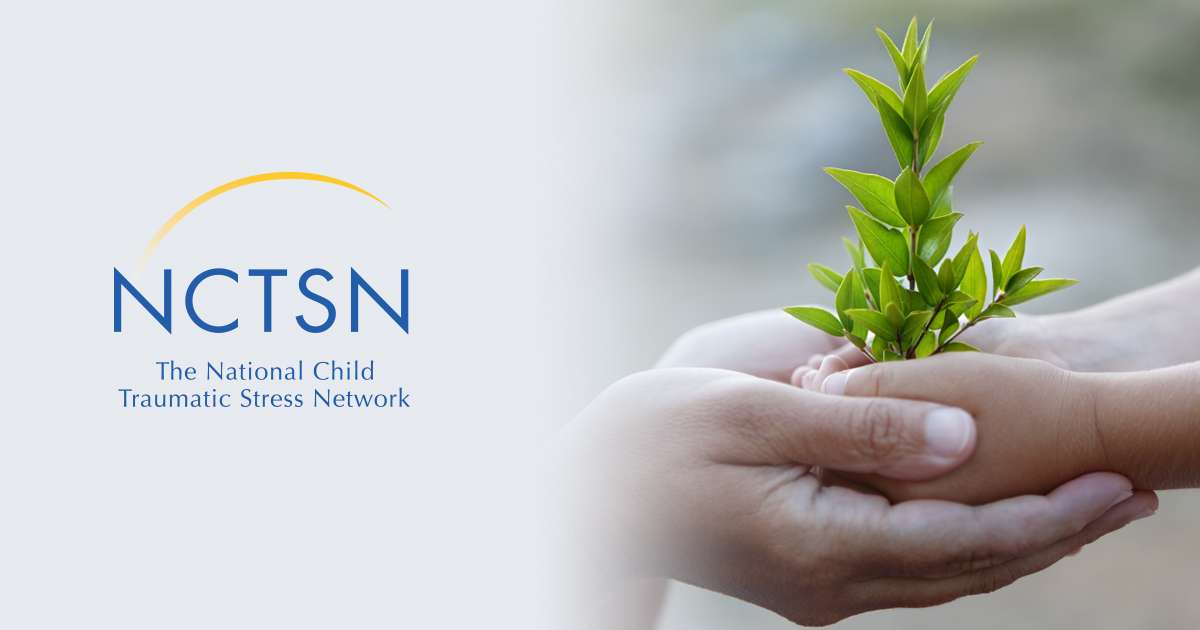Psychological First Aid (PFA) is an evidence-informed modular approach to help children, adolescents, adults, and families in the immediate aftermath of disaster and terrorism. Individuals affected by a disaster or traumatic incident, whether survivors, witnesses, or responders to such events, may struggle with or face new challenges following the event. PFA was developed by the National Child Traumatic Stress Network and the National Center for PTSD, with contributions from individuals involved in disaster research and response.
PFA is designed to reduce the initial distress caused by traumatic events and to foster short- and long-term adaptive functioning and coping. PFA does not assume that all survivors will develop severe mental health problems or long-term difficulties in recovery. Instead, it is based on an understanding that disaster survivors and others affected by such events will experience a broad range of early reactions (e.g., physical, psychological, behavioral, spiritual). Some of these reactions will cause enough distress to interfere with adaptive coping, and recovery may be helped by support from compassionate and caring disaster responders.
PFA core actions constitute the basic objectives of providing early assistance within days or weeks following an event. Providers should be flexible, and base the amount of time they spend on each core action on the survivors’ specific needs and concerns. The core skills are designed to be helpful in addressing the survivors’ and responders’ needs and concerns. PFA is designed for delivery in diverse settings. Mental health and other disaster response workers may be called upon to provide Psychological First Aid in general population shelters, special needs shelters, field hospitals and medical triage areas, acute care facilities (e.g., Emergency Departments), staging areas or respite centers for first responders or other relief workers, emergency operations centers, crisis hotlines or phone banks, feeding locations, disaster assistance service centers, family reception and assistance centers, homes, businesses, and other community settings.
The eight PFA Core Actions include:
- Contact and Engagement: To respond to contacts initiated by survivors, or to initiate contacts in a non-intrusive, compassionate, and helpful manner.
- Safety and Comfort: To enhance immediate and ongoing safety, and provide physical and emotional comfort.
- Stabilization (if needed): To calm and orient emotionally overwhelmed or disoriented survivors.
- Information Gathering on Current Needs and Concerns: To identify immediate needs and concerns, gather additional information, and tailor Psychological First Aid interventions.
- Practical Assistance: To offer practical help to survivors in addressing immediate needs and concerns.
- Connection with Social Supports: To help establish brief or ongoing contacts with primary support persons and other sources of support, including family members, friends, and community helping resources.
- Information on Coping: To provide information about stress reactions and coping to reduce distress and promote adaptive functioning.
- Linkage with Collaborative Services: To link survivors with available services needed at the time or in the future.
In addition to translating PFA into several languages, NCTSN members and partners have worked to develop PFA adaptations for school personnel (for use in the aftermath of a school crisis, disaster, or terrorism event), as well as community religious professionals, Medical Reserve Corps members, and staff at facilities serving families and youth who are experiencing homelessness.
To access the PFA Field Operations Guide, adaptations, handouts, and other resources related to PFA, visit NCTSN Resources. To learn more, visit the PFA Online course on the NCTSN Learning Center for Child and Adolescent Trauma.
What is Psychological First Aid?
Psychological First Aid is an evidence-informed[1] modular approach to help children, adolescents, adults, and families in the immediate aftermath of disaster and terrorism. Psychological First Aid is designed to reduce the initial distress caused by traumatic events and to foster short- and long-term adaptive functioning and coping. Principles and techniques of Psychological First Aid meet four basic standards. They are:
- Consistent with research evidence on risk and resilience following trauma
- Applicable and practical in field settings
- Appropriate for developmental levels across the lifespan
- Culturally informed and delivered in a flexible manner
Psychological First Aid does not assume that all survivors will develop severe mental health problems or long-term difficulties in recovery. Instead, it is based on an understanding that disaster survivors and others affected by such events will experience a broad range of early reactions (for example, physical, psychological, behavioral, spiritual). Some of these reactions will cause enough distress to interfere with adaptive coping, and recovery may be helped by support from compassionate and caring disaster responders.
Most people will experience at least one potentially traumatic event in their lifetime.
While the types and impacts of trauma vary widely, we know that most people recover by drawing on their existing supports, resources and skills.
For those working with people impacted by trauma, Psychological First Aid training can help develop skills to provide emotional comfort and support and offer practical advice and assistance to address people’s immediate needs.
What is Psychological First Aid?
Psychological First Aid (PFA) is a simple and practical approach that anyone with the appropriate training can use to help calm a person in distress and support their recovery.
Using PFA can help you to reduce initial distress in others, and to help them cope better in the days and weeks following a traumatic event, such as a disaster, workplace accident, or assault. PFA training provides you with the skills and confidence to engage safely and effectively with trauma impacted people that you might already be interacting with in the workplace.
Phoenix Australia’s evidence-informed approach to PFA can be used across a range of situations to help individuals, families, teams and communities who have experienced a potentially traumatic event.
Psychological First Aid: Field Operations Guide

Disaster Responders
Developed jointly with the National Child Traumatic Stress Network, PFA is an evidence-informed modular approach for assisting people in the immediate aftermath of disaster and terrorism: to reduce initial distress, and to foster short- and long-term adaptive functioning.
It is for use by first responders, incident command systems, primary and emergency health care providers, school crisis response teams, faith-based organizations, disaster relief organizations, Community Emergency Response Teams, Medical Reserve Corps, and the Citizens Corps in diverse settings.
Helpful resources
- Download the free Psychological First Aid Mobile App
- Download the Handouts for Survivors (PDF) – 5th appendices.
The Psychological First Aid Manual contents
NOTE: PFA is adaptations are available for specific audiences (schools, religious leaders, homeless) and translated into other languages on the National Child Traumatic Stress Network website.
Training on PFA
- Training in PFA: Psychological First Aid Online.
 Login to learn about this intervention.
Login to learn about this intervention. - Subscribe to PFA Channel and View the PFA Online Videos.

PFA was created with the Terrorism Disaster Branch of the National Child Traumatic Stress Network as well as others involved in disaster response. Production of this information was supported by SAMHSA.
Hardcopies of the PFA Field Operations Guide can be purchased at www.castlepress.net/nctsn for around $10 each.
for around $10 each.
NOTE: A current version of Adobe Acrobat Reader is needed to access PDFs on this site.
is needed to access PDFs on this site.
Psychological first aid (PFA) is a technique designed to reduce the occurrence of post-traumatic stress disorder. It was developed by the National Center for Post Traumatic Stress Disorder (NC-PTSD), a section of the United States Department of Veterans Affairs, in 2006. It has been endorsed and used by the International Federation of Red Cross and Red Crescent Societies, Community Emergency Response Team (CERT), the American Psychological Association (APA) and many others. It was developed in a two-day intensive collaboration, involving more than 25 disaster mental health researchers, an online survey of the first cohort that used PFA and repeated reviews of the draft.
Definition
[
edit
]
According to the NC-PTSD, psychological first aid is an evidence-informed modular approach for assisting people in the immediate aftermath of disaster and terrorism to reduce initial distress and to foster short and long-term adaptive functioning. It was used by non-mental health experts, such as responders and volunteers. Other characteristics include non-intrusive pragmatic care and assessing needs. PFA does not necessarily involve discussion of the traumatic event and avoids any activity associated with “debriefing” as that technique has been associated with increased rates of PTSD.
Components
[
edit
]
- Protecting from further harm
- Opportunity to talk without pressure
- Active listening
- Compassion
- Addressing and acknowledging concerns
- Discussing coping strategies
- Social support
- Offer to return to talk
- Referral
Steps
[
edit
]
- Contact and engagement
- Safety and comfort
- Stabilization
- Information gathering
- Practical assistance
- Connection with social supports
- Coping information
- Linkage with services
History
[
edit
]
Before PFA, there was a procedure known as debriefing. Debriefing was a necessary step in a commercially available training intended to reduce PTSD called “Critical Incident Stress Management” (CISM) . It was intended to reduce the incidence of post traumatic stress disorder (PTSD) after a major disaster. PTSD is now widely known to be debilitating; sufferers experience avoidance, flashbacks, hyper-vigilance, and numbness. Debriefing procedures were made a requirement after a disaster, with a desire to prevent people from developing PTSD. The idea behind it was to promote emotional processing by encouraging recollection of the event. Debriefing has origins with the military, where sessions were intended to boost morale and reduce distress after a mission, however the US Department of Defense discontinued the practice in 2002 due to evidence indicating that the practice increased PTSD rates[3]. Debriefing was done in a single session with seven stages: introduction, facts, thoughts and impressions, emotional reactions, normalization, planning for future, and disengagement.
Debriefing was found to be at best, ineffective[4][5][6][7], and at worst, harmful[8] with some studies finding that PTSD rates actually increased as a result of debriefing. There are several theories as to why debriefing increased incidence of PTSD. First, those who were likely to develop PTSD were not helped by a single session. Second, being re-exposed too soon to the trauma could lead to retraumatization. Exposure therapy in cognitive behavioral therapy allows the person to adjust to the stimuli before slowly increasing severity. Debriefing did not allow for this. Also, normal distress was seen to be pathological after a debriefing and those who had been through a trauma thought they had a mental disorder because they were upset. Debriefing assumes that everyone reacts the same way to a trauma, and anyone who deviates from that path, is pathological. But there are many ways to cope with a trauma, especially so soon after it happens.
PFA seems to address many of the issues in debriefing. It is not compulsory and can be done in multiple sessions and links those who need more help to services. It deals with practical issues which are often more pressing and create stress. It also improves self-efficacy by letting people cope their own way. PFA has attempted to be culturally sensitive, but whether it is or not has not been shown. However, a drawback is the lack of empirical evidence[10]. While it is based on research, it is not proven by research[11]. Like the debriefing method, it has become widely popular without testing, however debriefing is linked to harmful outcomes whereas PFA specifically avoids debriefing.[12]
Notes
[
edit
]
References
[
edit
]




